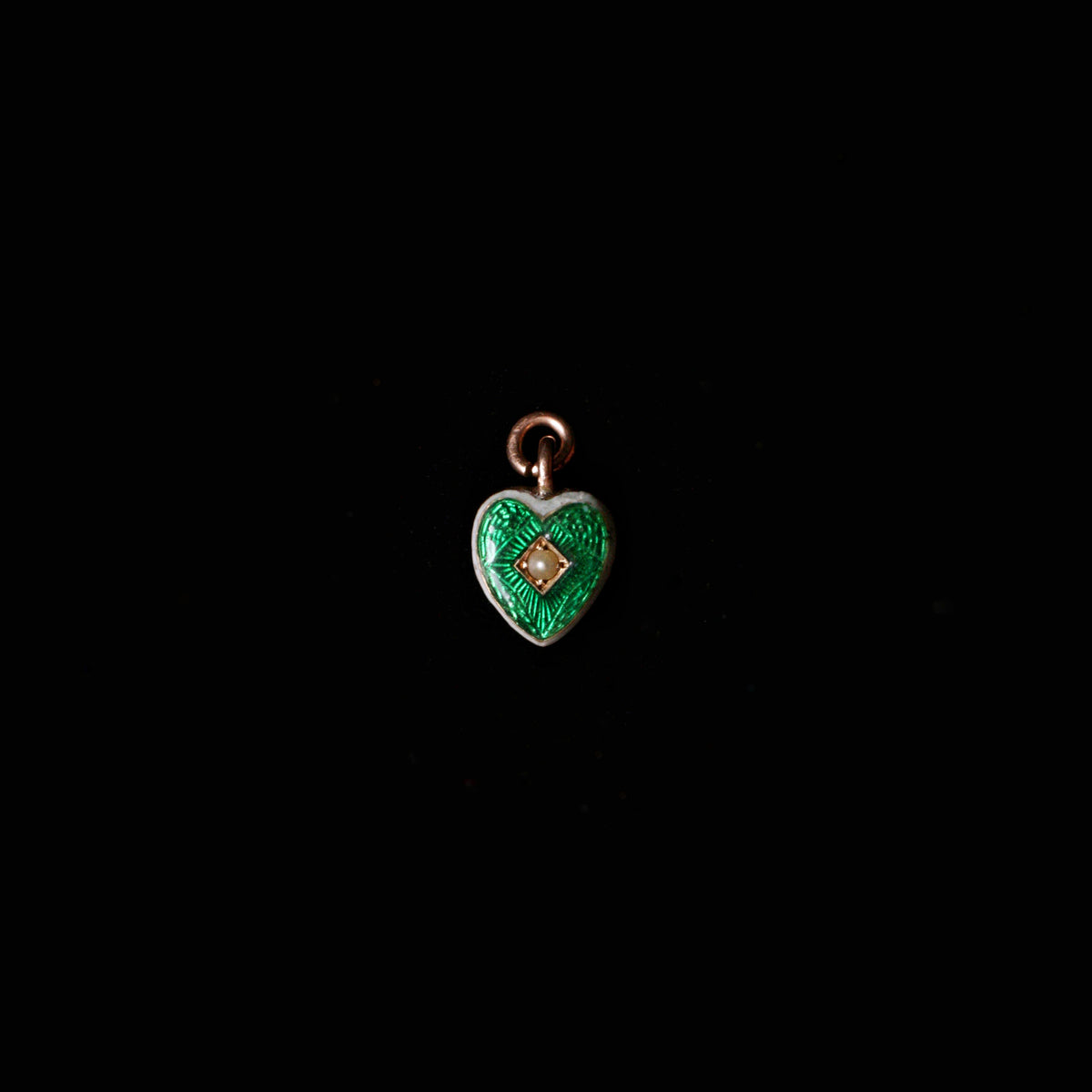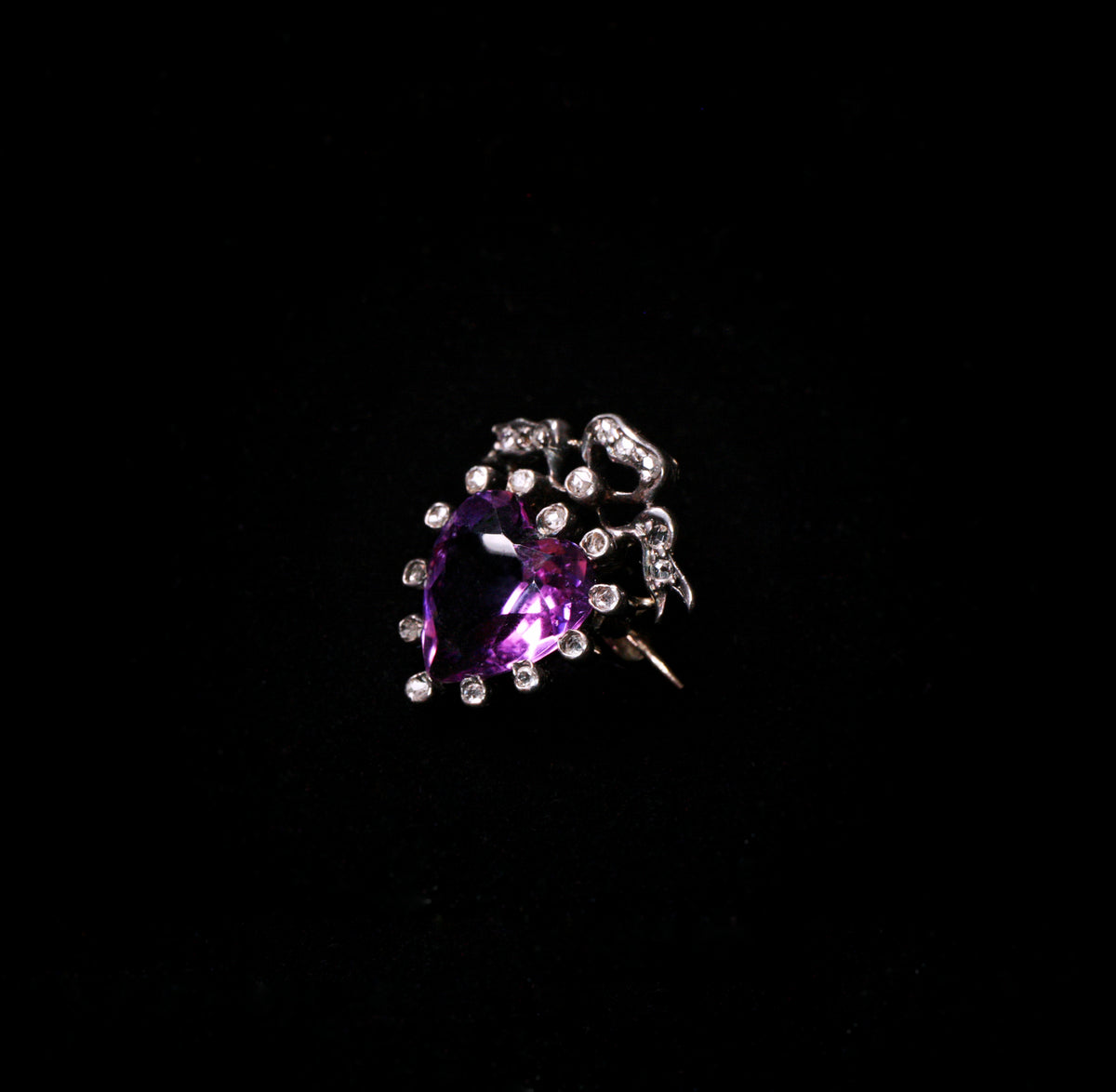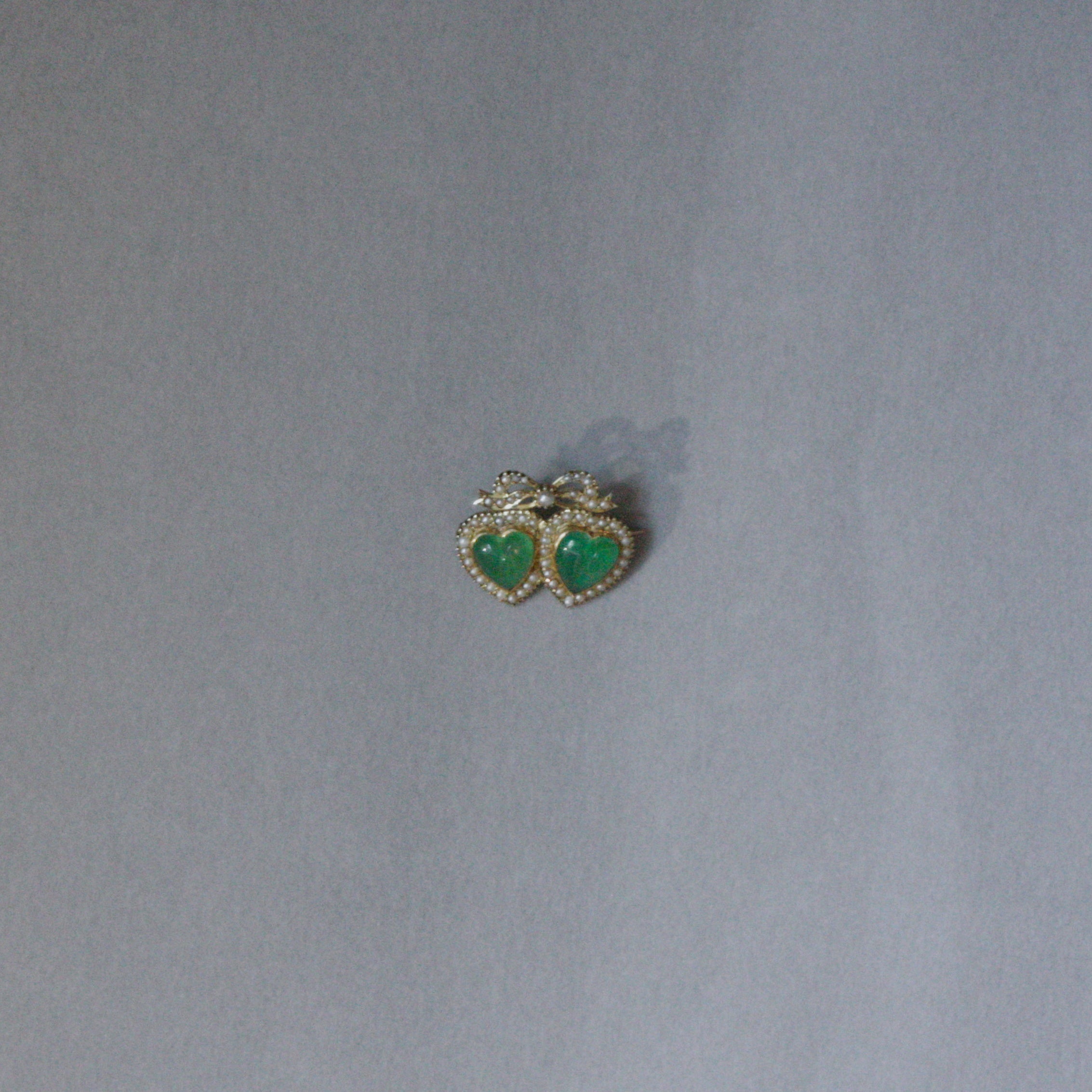As one of the oldest shapes in the visual language of jewellery, no shape carries the weight of sentiment like the heart. It is at once simple and profound, a symbol so familiar that we rarely stop to consider its journey. Yet it has not always been the stylised form that we know, nor has it always been a symbol of romantic love; on the contrary, it was more often represented in the shape of an anatomically accurate heart, symbolising divine passion. From sacred emblem to lover’s token, let us trace its story through time in its various incarnations.
Sacred Origins and Early Symbolism
Before it became shorthand for romantic love, the heart was steeped in spiritual meaning. In medieval Europe, depictions of the Sacred Heart in Christian iconography were among the earliest uses of the shape as a symbol of devotion. These hearts were often depicted as anatomically accurate hearts, with the protruding shape of the aorta intact. They were richly decorated, variously aflame, encircled by thorns, or pierced by nails or crucifixes, visual metaphors for God's divine suffering and compassion.
Goldsmiths of the late Middle Ages translated this imagery into wearable tokens. Pilgrims carried heart-shaped badges as a souvenir of their pilgrimage, a physical emblem to accompany inward devotion. The heart, then, was first about eternal faith and devotion, which seems a natural transition to a symbol of lasting romantic love.

The Renaissance: Love Becomes Personal
By the 15th and 16th centuries, the heart had crossed a threshold—from sacred symbol to intimate language. In Renaissance Europe, posy (or poesy) rings engraved with tender mottos were exchanged as promises, their heart motifs etched alongside flowers and hands clasped in union (as in fede rings). These were jewels meant to be read as well as worn.
The age of humanism, with its celebration of earthly life, reframed the heart as the vessel of personal love rather than divine passion. Jewellery became not only an ornament but a messenger, carrying with their words, a promise.

Victorian Sentimentality and the Heart in Mourning
If the Renaissance gave the heart its first romantic turn, the Victorian era perfected its sentimental vocabulary. Queen Victoria herself popularized heart motifs in both love tokens and mourning jewellery. Lockets, in particular, flourished—a small gold heart that opened to reveal a portrait or a lock of hair.
But Victorian hearts were not always light-hearted. Black hearts in mourning jewellery, in enamel, onyx, jet, or vulcanite, spoke of loss and remembrance. White hearts symbolised the death of a child Here, jewellery served as a private reminder of mourning, allowing the bereaved to keep memories of the beloved close.

Modern Transformations: From Avant-Garde to Pop Icon
The 20th century fractured tradition, and the heart followed suit. Designers of the Art Nouveau period rendered it in sinuous lines, entwining it with vines and fantastical motifs. Later, Art Deco reimagined the heart in sharp geometry and monochrome contrast, stripping away sentimentality in favor of sleek elegance.
By mid-century, however, the heart had re-entered popular culture with a new kind of boldness. Think Elsa Peretti’s open-heart pendant for Tiffany & Co., launched in the 1970s—a design that distilled centuries of meaning into one fluid, modern gesture. Today, hearts appear everywhere, from high jewelry to playful costume pieces, carrying echoes of both the sacred and the sentimental.
Why It Endures
Why does this shape, so modest in form, persist across centuries and styles? Perhaps because the heart speaks in a language beyond trends: a symbol that can bear the weight of every human attachment, from divine devotion to fleeting affection. In jewellery, it becomes something more than metaphor: it becomes physical, tangible matter. Gold, enamel, diamond—all to give permanence to what is, by nature, impermanent.
For the Collector: What to Look For
For those drawn to the heart motif, rarity lies in the details. Georgian and early Victorian pieces are prized for their rarity and craftsmanship: enameled hearts with hand-painted miniatures, or those adorned with seed pearls, which symbolise tears. Sentimental jewelry with hidden compartments can tell a richer story: lockets that once held photos of the beloved--or even locks of their hair.
Even 20th-century interpretations have their allure: the fluid, open hearts of modernist designers, or the sculptural experiments of post-war brutalism. Each one represents a chapter in the long conversation between ornament and emotion. In the end, the heart endures not because it is simple, but because it is inexhaustible.







댓글 2개
This is really interesting! Do you have any pictures of good collector’s pieces?
What about traditional motifs like the Luckenbooth heart and the Claddagh?